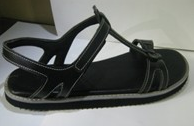Some foods which are really very healthy, many a times, get reduced in importance and are considered as side dishes. Here are some very healthy choices that you can use as salads.


Broccoli : It is high in vitamin C and dietary fibre and contain nutrients with anti- cancer properties.

Fish: Packed with protein, vitamins and nutrients that can lower blood pressure and reduce the risk of heart attack or stroke.

Black beans (Urad) : Low in fat and high in protein and fibre they have anti- oxidant and anti- inflammatory properties which combat cardiovascular disease.
ARUGULA (Tara Mira)



Tomatoes : This contains a lot of antioxidants that help in decreasing the risk of arterial aging, heart disease, stroke, memory loss, impotence and wrinkling of the skin.

Broccoli : It is high in vitamin C and dietary fibre and contain nutrients with anti- cancer properties.

Fish: Packed with protein, vitamins and nutrients that can lower blood pressure and reduce the risk of heart attack or stroke.

Black beans (Urad) : Low in fat and high in protein and fibre they have anti- oxidant and anti- inflammatory properties which combat cardiovascular disease.
ARUGULA (Tara Mira)


CABBAGE SPINACH
Leafy greens: Spinach, cabbage and arugula, are rich sources of Vitamin B and pack a punch. One serving of leafy greens is loaded with fibre, calcium and almost the entire day’s recommended dose of beta carotene which is vital for immune system health.
While buying arugula leaves or rocket leaves, look for young crispy green leaves. Avoid flowered harvest, as its leaves are tough and bitter in taste.



















